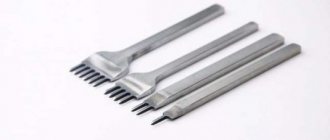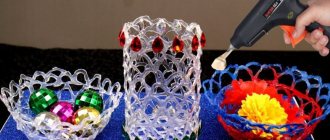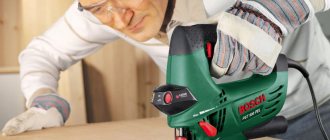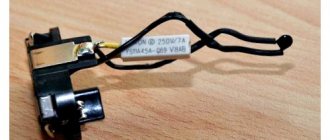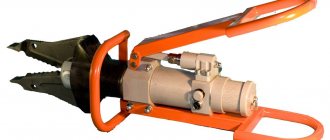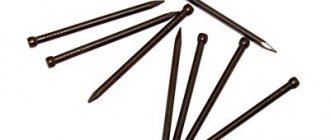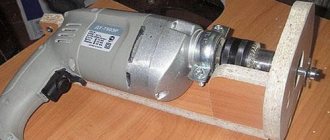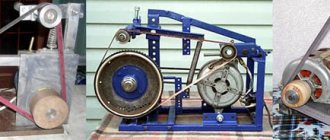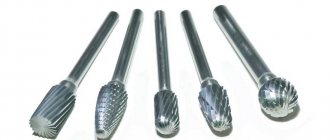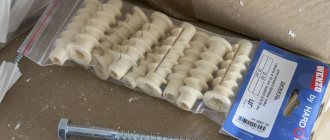Any master at the beginning of his journey in leatherworking was faced with the difficulty of which leather punch to choose. I, too, when I started working with leather, was very lost in all these options, I didn’t understand how round punches differ from diamond-shaped ones, what a reverse punch means and why it is needed, what pitch and diameter to choose.
In general, it seemed to me then that this was all very difficult and choosing a tool for punching holes in the skin was not at all possible for a beginner.
But with time and experience, you understand which set of leather punches is right for you.
I want to say right away that there are no “right” or “wrong” options for leather punches. Each one is unique in its own way and the master can choose any one depending on his wishes and style. This article will be useful for both beginners and experienced craftsmen; in it we will look at the types of punches, how they differ, what step is needed for what, and where you can buy them. I will also tell you directly about my experience and what punches I use myself.
What are the differences between line punches? Main types
Conventionally, they can be divided into 3 types according to the principle of operation.
Markers
This is the first option, with which you do not punch anything, but simply mark holes along the seam line, and then finish it off with an awl. I won’t write about markers in this article, I’ll make a separate one and write everything about them. If you want my personal advice, I don’t recommend using markers for beginners.
Punchers - cutter
The second option, they work as a cutter. Place along the seam line and hit from above with a mallet. That's the whole principle of operation. They are divided into several types:
French punches. The output is a line in the shape of a Christmas tree. You need to take a kit. I would advise taking 5 and 2 teeth. On a bend, you won’t be able to get by without a 2-tooth punch. Decide for yourself the pitch, the optimal one in my opinion is 3.85mm . If you choose the French type , remember that you may need a reverse version of the punch. This is a punch with mirror-opposite teeth. It is needed in some cases, if you are punching many layers of leather at once, then perhaps from the reverse side, you will have to punch it too, and then you cannot do without a reverse punch. It is also needed for symmetrical seams on items such as watch straps.
Japanese type (Diamond) Japanese punches make the same stitch as the French one. The only thing they have is a wide diamond-shaped tooth. All of the tips listed about pitch and set are also suitable for diamond-shaped punches.
Oblique These punches are almost the same as French and diamond-shaped (Japanese), the difference from Japanese ones is only in the shape of the tooth, it is more rectangular.
Needle punches or nails. These punches make a regular straight stitch. Just like round ones, but they don’t carve, but cut holes for the seam.
Round, die-cutting punches
Another type of line punches is round . They, unlike the others, cut out the skin and make a hole.
When choosing punches, keep in mind the following: with punches (French, Japanese, oblique, nails), you can glue the product in advance, and then punch all the layers together. But keep in mind that this is not so simple and you need skill and experience so as not to damage the product. Punching it carefully so that there is a beautiful breakdown on both sides, even 3 layers of skin, will be problematic. And if you choose round die-cutting punches , then you will have to punch each workpiece separately. At most, you can pierce 2 layers at once, but I don’t recommend even this, since on the reverse side the holes will no longer be very neat.
My personal advice for beginners, based on 4 years of experience working with leather:
- Buy good, round, die-cutting punches with 4mm or 5mm pitches.
- And an inexpensive set of diamond-shaped ones (price up to 600 rubles)
Two options are needed in order to understand your style. Then, if you sell one set, but try, I highly recommend both punches. If you don't try, you won't know, as they say.
Now let's talk directly about what I use myself. I tried 3 types of punches, diamond (bought on Aliexpress), French and round die-cutting. I settled on round ones for a number of reasons, the main one being the press. Now I’ll tell you a little about my punches, give a short review, and then explain why I chose round punches because of the press.
I bought round punches on Aliexpress , a set of 3 pieces. For 5 teeth, 2 teeth and 1 tooth. The pitch is 5 mm and the diameter of the teeth is 1 mm . You don’t need to edit or sharpen anything, you buy it and you can immediately work on the leather. A punch for 2 teeth, you don’t have to take it, a one and a five are quite enough. The big plus of these round punches is that the teeth are replaceable. If a tooth breaks on a diamond or French, you think you throw away the tool, but here you just unscrew the tooth and replace it with a new one. Spare parts are included with the tool.
I also recommend purchasing a mallet. You can also buy it on Aliexpress. Why won't a simple hammer work, you ask? The answer to this question is in the photo. The punches are 4 years old, but I acquired this defect in the first month; I use a regular hammer until I bought a mallet. I punch it on the board, by the way, you can buy a cutting board from Ikea, the price is around 200 rubles. I use this one, I don’t even know where I got it from.
Now I’ll tell you about the press, I bought it for one purpose - for cutting blanks. I knew that the kit included a punch, and in theory you could use a press to punch holes, but I thought that this function would not be useful to me at all. How wrong I was.
Punch and its purpose
The tool is a pointed metal tube , by placing it on many types of material and hitting it several times, you can make a neat round hole. The tool can be made from any thin-walled tube, the main thing is that its edges are sharp enough.
There are also multi-blade cutting tools that process conical and cylindrical holes in parts. This tool is also called a countersink punch because it combines two functions at once:
- the sharp tip immediately punches a hole;
- The built-in blade expands the hole to the desired diameter.
The tool allows you not only to increase the diameter of the hole, make it more accurate, but also significantly improve the quality of the work performed. Mechanical processing will require high power so that the operation is performed as accurately as possible. It is difficult to perform such operations manually, so special machines of any type are used for this purpose:
- turning;
- milling;
- aggregate.
A standard punch consists of a cutting part, a calibrating and cutting part, a shank and a neck.
The main cutting edges are located specifically on the cutting part and at a certain angle. The type of countersink punch determines the angle of the tool, for example, for plastic materials the angle is approximately 15°, and for more brittle metals it is about 5°. The calibrating part has a cylindrical shape; calibrating edges are always located on it, the purpose of which is calibration and cleaning of holes. At the end of the calibrating part there is a small reverse cone with a reduction value of 0.04-0.07 mm to prevent damage to the ends of the teeth.
Depending on the purpose of sharpening, the number of teeth in each type of tool is different. The teeth are spaced evenly to improve material finish, productivity and quality.
What tools are needed when working with leather?
There are dozens of types of tools used to process leather products.
How to cut leather
When working with leather, you have to make a lot of cuts and remove excess material. To easily cope with these tasks, it is necessary to use special cutting tools. These include the following:
- Knife with removable blade. It is small in size and perfect for cutting thick materials. Thanks to the presence of removable blades, the knife will always be sharp and ready for use. Such a product is relatively expensive, so many novice craftsmen prefer to use an ordinary stationery knife. He is also capable of doing a good job. Its only drawback is the need to sharpen frequently.
- Leather scissors. Experts recommend using a tailor's tool that has a self-sharpening function. Do not use office scissors for this work. They will quickly become dull and make crooked cuts.
- Chamfering tool. This metal device has a forked blade at the end, which easily processes the edges of a leather product. Any bevel cutter is equipped with a wooden handle that does not slip out of your hands and does not rub the skin.
What surface to cut leather on?
Leather cutting should be done on a special board. It must have a standard set of characteristics to ensure efficient and safe operation.
Surface Requirement:
- the presence of roughness that prevents the material from sliding;
- high hardness of the product, capable of withstanding strong pressure with a sharp knife;
- the board should not be fibrous.
Plastic (for example, a kitchen board) meets all of the above requirements. This material is able to perform its functions for a long time and not lose efficiency. Other options you can choose from:
- plexiglass;
- linoleum;
- hardboard
How to thin the skin
Thinning (skin roughening) is cutting off the edges of the material in order to create a minimum thickness of the manufactured product. To do this job, you need to use different types of knives and other similar devices. The most popular among them are the following:
- German (shoe) knife. It has a triangular shape and a slightly rounded end. The main feature of the product is one-sided sharpening. The knife thins the material well without tearing it in other places.
- French knife. Unlike German, it has a semicircular shape. Its blade must always be sharp, so the craftsman has to sharpen the product often.
- Planer for leather. It has a sharp blade that is extended relative to the head of the tool. Thanks to this, the plane removes a thin layer of the processed material after each scraper.
How to cut shoelaces
To obtain thin and long laces, craftsmen use a beveller. This device sharpens sharply and easily cuts through even the densest material. If it is not possible to purchase it, then you can do the work using a knife and a (metal) ruler.
Leather embossing tools
Embossing is the extrusion of various patterns and images. During this operation, you need to use special stamps. They are metal tools that can be easily pressed into a product and leave visible marks.
To emboss leather with your own hands, you can use forms, which are quite simple to make from various available materials.
What other tools are needed?
In the process of making an item, you may need different tools for working with leather. Most of them can be purchased in special stores or made with your own hands.
Necessary equipment:
- Punch. It consists of a metal base to which needles of different sizes can be attached. With this tool it is easy to make a hole in the skin.
- Saddler (wooden or metal vice). They are used to fix leather products in the desired position.
- Clamps. These devices will become indispensable when gluing 2 workpieces. Clamps will firmly fasten them together and eliminate the possibility of shifting.
- Marker. It is a tool with a rotating circle with needles at the end. As the wheel spins, each needle lightly pierces the material, leaving a visible mark on it.
Where to buy leather working tools
Most tools are sold in specialized or construction stores. Some accessories can be purchased in departments with sewing supplies.
Cylindrical punches
Serious tools used to make holes in the saddlery or leather industry differ from household tools only in the quality and durability of the materials used.
To punch single holes of sufficiently large diameter, for example, to install rivets or eyelets, punches are used in the form of a metal tube with a sharp sharpening at the end, sometimes with a plastic or rubber handle and a technological opening for removing knocked out circles of leather. These punches are usually sold in sets of several pieces, with tube diameters ranging from 1.5 mm (1/16″) to 16.8 mm (3/8″).
To make a hole in leather or other soft material, place the latter on a hard base (a smooth board is best), mark it, set the punch vertically and hit it with a hammer. But this is a radical solution. Usually it is enough to press the tube with your hand and turn it. The hole is smooth and neat, the material does not jam.
Line punches
This tool is not much different from a stepper; they are often combined into one category. A line punch for leather is usually made with round pins of small diameter, from one and a half millimeters, and a pitch between them of 5-6 mm. It is used for punching not only leather, but also cardboard, fabric and other materials. The strikers are screwed into the base and can be replaced with spare ones if they break.
When working, be sure to use a backing made of soft wood or rubber.
There are pruning-type punches for making holes in thick or glued leather, in which the teeth are located with their tips facing each other. The holes are smooth on both the front and back sides of the material being punched. Overlays with teeth are installed on threaded connections.
Stepper punches
To hand stitch thick leather, holes are first punched using a leather stepper. This tool resembles a fork, the teeth of which are sharpened in a special way, most often with a diamond shape. Sets usually sell punches with a certain pitch and the same width of teeth, of which there are from one to ten.
The teeth in certain models of punches are located at an angle of 45° to the line of holes. Using such a tool, you can not only sew a straight seam, but also overcast the product over the edge.
To prepare holes for braiding or Mexican braiding, use a stepper punch with diagonal teeth.
Whatever the shape of the teeth and their location, such a tool is used to pierce suede and leather up to five millimeters thick.
